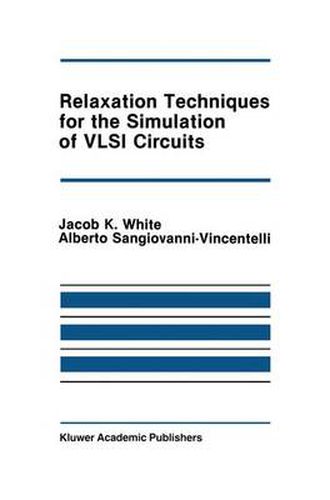Readings Newsletter
Become a Readings Member to make your shopping experience even easier.
Sign in or sign up for free!
You’re not far away from qualifying for FREE standard shipping within Australia
You’ve qualified for FREE standard shipping within Australia
The cart is loading…






This title is printed to order. This book may have been self-published. If so, we cannot guarantee the quality of the content. In the main most books will have gone through the editing process however some may not. We therefore suggest that you be aware of this before ordering this book. If in doubt check either the author or publisher’s details as we are unable to accept any returns unless they are faulty. Please contact us if you have any questions.
Circuit simulation has been a topic of great interest to the integrated circuit design community for many years. It is a difficult, and interesting, problem be cause circuit simulators are very heavily used, consuming thousands of computer hours every year, and therefore the algorithms must be very efficient. In addi tion, circuit simulators are heavily relied upon, with millions of dollars being gambled on their accuracy, and therefore the algorithms must be very robust. At the University of California, Berkeley, a great deal of research has been devoted to the study of both the numerical properties and the efficient imple mentation of circuit simulation algorithms. Research efforts have led to several programs, starting with CANCER in the 1960’s and the enormously successful SPICE program in the early 1970’s, to MOTIS-C, SPLICE, and RELAX in the late 1970’s, and finally to SPLICE2 and RELAX2 in the 1980’s. Our primary goal in writing this book was to present some of the results of our current research on the application of relaxation algorithms to circuit simu lation. As we began, we realized that a large body of mathematical and exper imental results had been amassed over the past twenty years by graduate students, professors, and industry researchers working on circuit simulation. It became a secondary goal to try to find an organization of this mass of material that was mathematically rigorous, had practical relevance, and still retained the natural intuitive simplicity of the circuit simulation subject.
$9.00 standard shipping within Australia
FREE standard shipping within Australia for orders over $100.00
Express & International shipping calculated at checkout
This title is printed to order. This book may have been self-published. If so, we cannot guarantee the quality of the content. In the main most books will have gone through the editing process however some may not. We therefore suggest that you be aware of this before ordering this book. If in doubt check either the author or publisher’s details as we are unable to accept any returns unless they are faulty. Please contact us if you have any questions.
Circuit simulation has been a topic of great interest to the integrated circuit design community for many years. It is a difficult, and interesting, problem be cause circuit simulators are very heavily used, consuming thousands of computer hours every year, and therefore the algorithms must be very efficient. In addi tion, circuit simulators are heavily relied upon, with millions of dollars being gambled on their accuracy, and therefore the algorithms must be very robust. At the University of California, Berkeley, a great deal of research has been devoted to the study of both the numerical properties and the efficient imple mentation of circuit simulation algorithms. Research efforts have led to several programs, starting with CANCER in the 1960’s and the enormously successful SPICE program in the early 1970’s, to MOTIS-C, SPLICE, and RELAX in the late 1970’s, and finally to SPLICE2 and RELAX2 in the 1980’s. Our primary goal in writing this book was to present some of the results of our current research on the application of relaxation algorithms to circuit simu lation. As we began, we realized that a large body of mathematical and exper imental results had been amassed over the past twenty years by graduate students, professors, and industry researchers working on circuit simulation. It became a secondary goal to try to find an organization of this mass of material that was mathematically rigorous, had practical relevance, and still retained the natural intuitive simplicity of the circuit simulation subject.